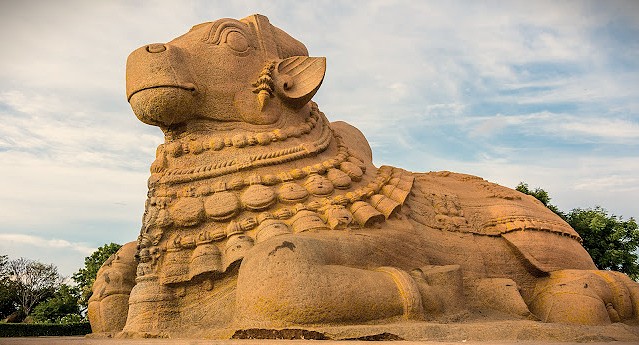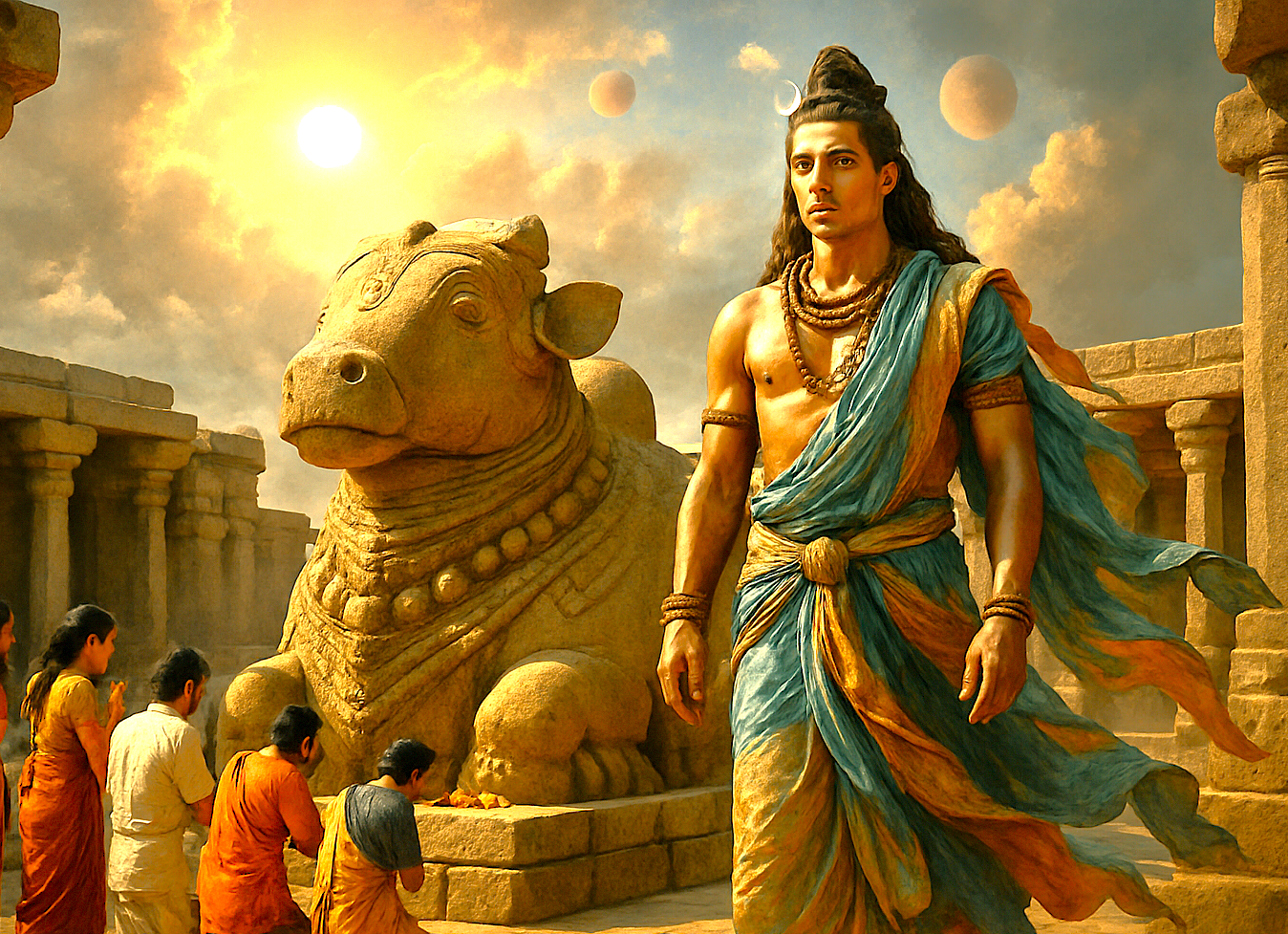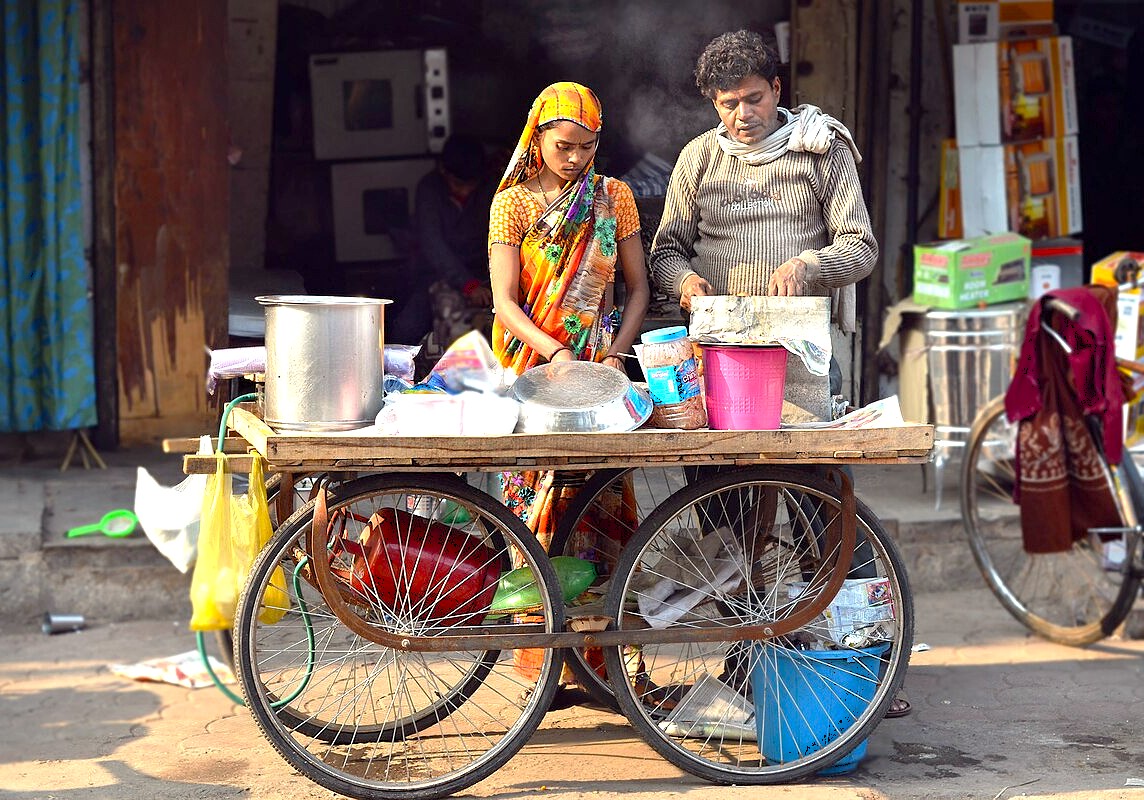Echoes of Ancient Past's
Nandi Bull Lepakshi India
Mother Masala Tours
India's Largest Stone Bull
Nandi Bull Lepakshi India. The large Nandi monolithic sculpture was carved from a single granite stone in Andhra Pradesh. It is located about 200 meters from the Veerabhadra Temple and faces the temple in a customary pose. Nandi is known as the sacred vehicle of the god Shiva, symbolizing loyalty and service in these traditions. Created during the 16th-century Vijayanagara Dynasty, this massive sculpture is an example of artistic and engineering skill. You can observe the detailed carvings of garlands and bells on the bull’s body, which add to the sculpture's refined appearance and overall composition.

Nandi Bull Lepakshi India: Timeless Artifacts
Nandi anchors us in a sacred space associated with devotion and artistry. Positioned directly in line with the Veerabhadra Temple, the statue acts as a divine sentinel, amplifying the spiritual power of the temple complex. Unlike many Nandi statues found in South Indian temples, this one remains entirely outdoors, creating a peaceful relationship between nature and divinity. The surrounding temple, known for its mural paintings and intricate stone carvings, offers a rich historical and religious context.
Ancient Mosaics: Impeccable Craftsmanship

Nandi Bull Lepakshi India. Crafted during the Vijayanagara Dynasty, the Nandi reflects the work of master artisans who paid meticulous attention to form and detail. The flowing garlands, ornamental anklets, and intricately carved bells adorning Nandi's neck enhance its divine appearance. Carving such a perfect sculpture out of one block of granite speaks to the artistry and patience of the craftsmen responsible, who used traditional tools to shape this colossal masterpiece. The symmetry achieved in the bull's form demonstrates sophisticated understanding of anatomy and proportion.
The Pulse of the Local Community
The peaceful town of Lepakshi is home to warm and welcoming locals who hold their cultural heritage with pride. Their relationship with the sacred sites reflects devotion that has been passed down through generations. You will find that families here maintain traditional stone carving techniques, with skilled artisans continuing the legacy of their ancestors who once worked on these magnificent structures.
Capturing the Magic: A Photographic Haven

Lepakshi provides many angles for photography against the open sky. We capture its presence from different perspectives around the monolithic site. The intricate carvings on the bull’s body make interesting subjects for our pictures. Light and shadow change across the granite surface throughout the day creating varied compositions. During the early morning or late afternoon the stone takes on a warm color. This light makes the details of the sculpture stand out in photographs. We take both close-up shots of the ornamentation and wider frames that include the landscape.
A Culinary Journey: Savor the Flavour
Nandi Bull Lepakshi India. The region around Lepakshi is known for simple yet flavorful Andhra cuisine. Rice varieties dominate meals, accompanied by tamarind-based stews like pappu Pulusu, spiced vegetable curries, and lentil-based preparations. Pilgrims often enjoy fresh buttermilk and jaggery-sweetened sweets made using traditional methods. The food reflects the heritage of this quiet town, where recipes remain rooted in age-old traditions.
The Connection with the Gods

As the eternal vehicle and most devoted servant of Shiva, Nandi holds tremendous spiritual importance in Hindu mythology. Legends suggest Nandi serves as the divine guardian, observing all temple worshipers and carrying their sincerest prayers directly to Shiva. This faithful bull embodies purity, devotion, and justice. The colossal monolithic statue powerfully emphasizes this sacred role. Its precise alignment, facing the main sanctum of the Veerabhadra Temple, represents the unbroken, spiritual bond between the protector and the deity, highlighting an enduring legacy for millions of devotees worldwide.
Ancient Technologies: Sound, Sacred Geometry & Astrological Influences
The Nandi’s orientation toward Veerabhadra Temple demonstrates the precision of Vijayanagara engineers in adhering to sacred geometry. This natural positioning is believed to strengthen the spiritual energy radiating through the site, creating a reflective atmosphere for individuals approaching the temple. Granite, chosen for its durability, also absorbs natural heat during the day, helping pilgrims feel warmth as they meditate at the statue. The open placement of Nandi allows sounds and chants from the nearby temple to resonate clearly, enhancing the experience of prayer.
Serendipitous Meetings: Beyond the Main Path

Here artisans sell hand-carved wooden figurines, intricately painted lamps, and various religious symbols from small shops. The quiet streets lead us to different craftsmen whose work reveals the town’s long history of fine artistry. Exploring these pathways allows us to see the creative process and the final products available for purchase. The items for sale include detailed carvings and colorful textiles unique to this specific region of India. We observe the skills involved in making these objects as we walk through the market areas near the main temple sites.
Festivals of Devotion: Honouring the Sacred and the Divine
Located near Veerabhadra Temple, Nandi Bull Lepakshi is central to the temple’s vibrant celebrations. During Shivaratri (February - March), this site becomes a hub of devotion as rituals and offerings honor Shiva. The mood is energetic yet reflective, and the Nandi often gleams with elaborate decorations of turmeric, kumkum, and garlands of flowers.
Resilience and Renewal: Overcoming Adversity’s Challenges

Lepakshi experienced political conflicts after the Vijayanagara Empire's decline and natural erosion on its sculptures. The specific granite composition of the Nandi bull has proven to be quite resilient through these different challenges over time. Local communities actively participate in the safeguarding of this particular site. Their involvement has been passed down through many generations as a testament to perseverance and their own beliefs. These efforts reveal a long history of maintenance and protection. The continued existence of Lapakshi is a result of ongoing actions by the people maintaining its condition.
Urban Legends: Strange Sightings, Myths, and Mysteries
Surrounded by intriguing legends. One myth ties it to the epic Ramayana, claiming this sacred hill was where Jatayu, the bird deity, fell while battling Ravana. Locals believe the statue resonates with protective energy, offering comfort to weary travelers entering the town. Stories about unexplained phenomena, such as the sounds of bells ringing softly after twilight, add mystical layers to Nandi’s story.
The Greatest Stories Start With a ‘Yes’

We invite you to join us on a journey through this part of India. You will see the hanging pillar at the Veerabhadra temple, a marvel of engineering from the Vijayanagara period. This stone column appears to float above the ground, with just enough space to pass thin objects underneath it. The scale of Nandi is impressive, and it stands in an open area near the main temple complex. This trip focuses on observing these unique architectural achievements. We arrive to see what was built, and leave having seen the silence of what endures.
Symphony of Generosity: Offerings from Wanderers to Residents
The community around the Nandi remains integral to preserving its energy, welcoming people from diverse places while maintaining a peaceful, reflective atmosphere. These shared spaces foster enduring connections between pilgrims and locals. You will find that the beautiful exchange enriches both parties, as residents share their ancestral knowledge about stone carving techniques and temple rituals, while visitors contribute to local economic opportunities through authentic cultural experiences.